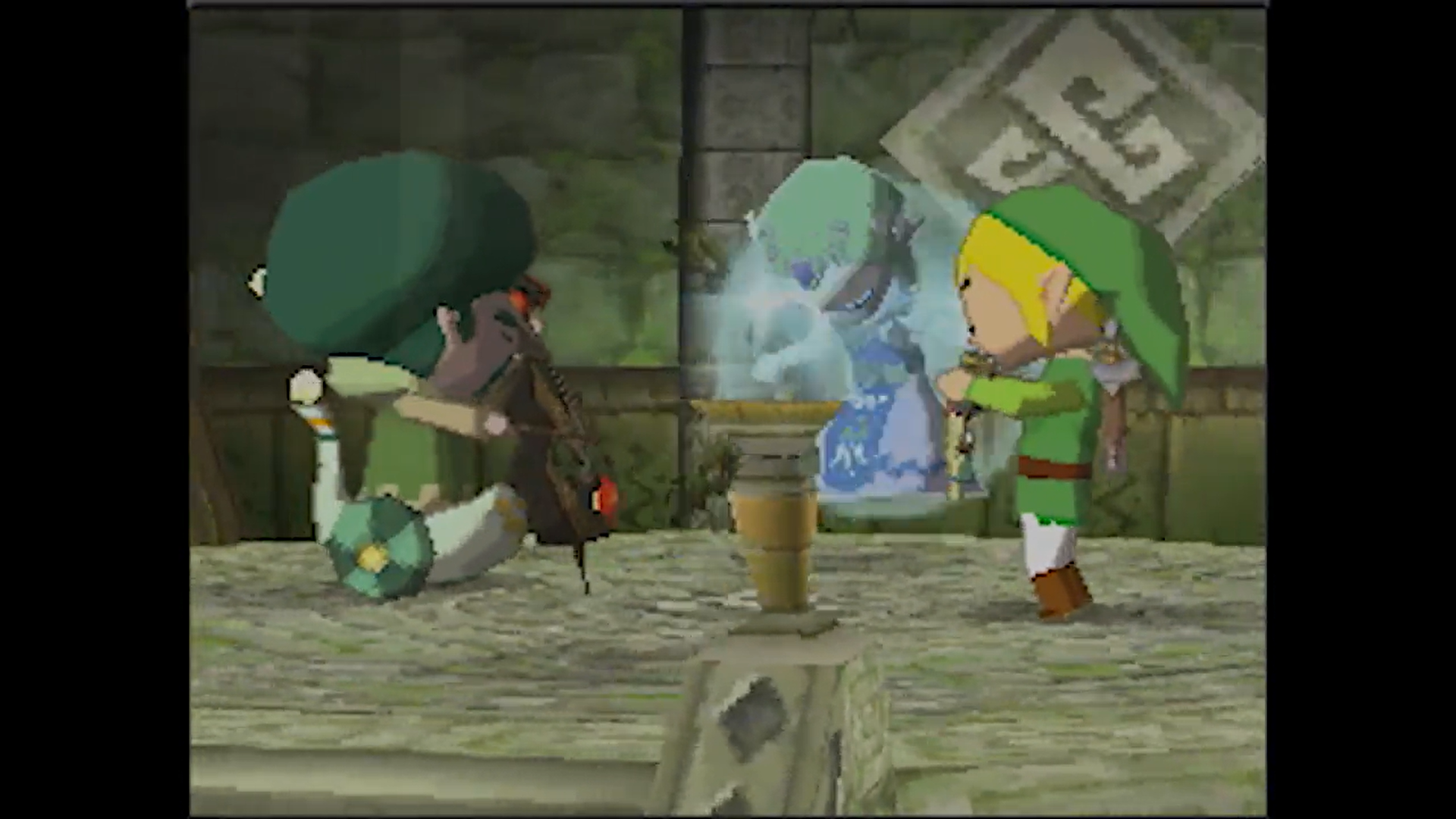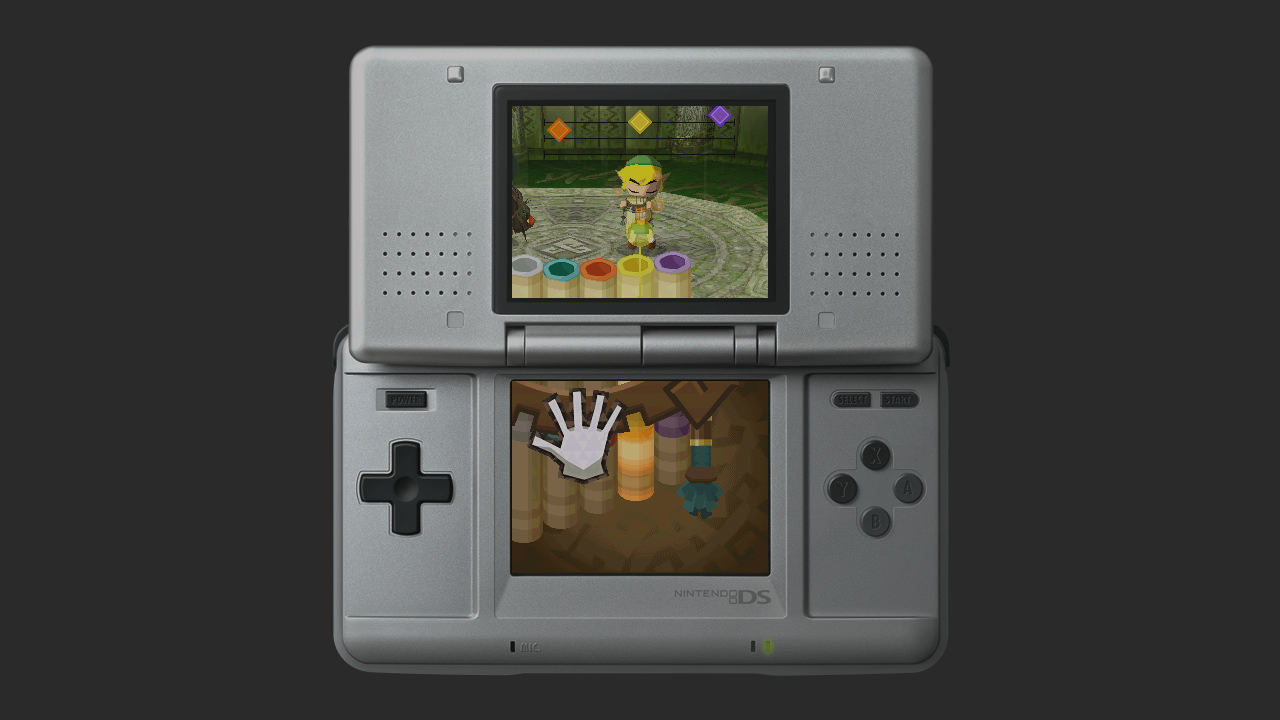The Legend of Zelda: Spirit Tracks carried the Phantom Hourglass torch to the next station
Another sleeper hit for the DS that's well worth a return ticket today

Trains often get a bad rep thanks to price hikes, loose timekeeping and all‑too‑frequent breakdowns, but it's not their fault they're overseen by clown‑shoed governments and corporations. Hark back to the time of steam power and it's easy to see locomotives in a better light: as the charmingly rickety coal‑hungry monsters that gently wound their way across the country. It's this nostalgic, bygone feeling that Spirit Tracks captures perfectly. While its predecessor, Phantom Hourglass, was concerned with the joys of sailing, this loose follow-up turns its steamy gaze to the glory days of public transport. Along the way, it isn't afraid to cast off traditional Zelda notions or reinterpret them in an engaging way.
Bolstered by the success of Phantom Hourglass, Nintendo was keen to create another touchscreen adventure for the Nintendo DS in rapid time. Thinking back to the short development time between Ocarina Of Time and Majora's Mask, Nintendo wanted to replicate the Nintendo 64 duo's success on its hugely popular handheld.
A-Train


That didn't go to plan and Spirit Tracks took two years to develop. Most of the original staff from Phantom Hourglass returned, including director Daiki Iwamoto and producer Eiji Aonuma, and the team was keen to return to the cel‑shaded style that the 'Sunken Hyrule' canon had established itself with. At this point, you're probably screaming, "But why trains!?" That concept came from Aonuma while reading Senro Wa Tsuzuku to his son. This bedtime story involved children laying tracks for a magical train that took them anywhere, and Aonuma thought this could work as a keystone feature for a new Zelda title. Half of his development team disagreed, creating a schism between the train haters and the (ultimately successful) choo-choo champions.
Aonuma and Iwamoto wanted this to be a unique Zelda game, however. Just like the team had achieved with Phantom Hourglass. Spirit Tracks, therefore, feels like a verdant ground for experimentation, providing gamers with a wealth of unfamiliar traits that ultimately work remarkably well. The first of these is its opening, the freshest in recent Zelda history. Set hundreds of years after Wind Waker and Phantom Hourglass, Spirit Tracks' iteration of Link is no mere villager waiting for his destiny to come calling. He is a lad with purpose and ambition (well, in a bumbling and slightly lazy way). He starts as an apprentice, hoping to earn the coveted green tunic that will mark him as a qualified train engineer. To do this, he has to visit Princess Zelda in her castle, and that's when the trouble kicks off.
Zelda takes a far more active role in Spirit Tracks than in previous titles… despite being dead for most of the adventure. Well, perhaps 'dead' is a bit strong – shortly after you meet her, a demon separates her soul from her body. In stark contrast to the victim-rescuer relationship they shared in many of the other Zelda titles, the pair are something of a double act in Spirit Tracks. Link handles all the boss‑stabbing and rupee‑hoarding, as usual, while the suddenly spectral Zelda develops the power to possess enemies. Assuming control of one of the hulking Phantom Guardians, returning from Phantom Hourglass, adds a new dimension to the series' traditionally lonely dungeon raids. Your new metal friend can attack enemies, activate switches and carry you through dangerous areas, all with a quick swish of the versatile stylus on the DS's touchscreen. It's one of the few times The Legend Of Zelda has flirted with the mechanics of a co-op game.
Before that, however, we have a train to catch. Spirit Tracks transforms Hyrule into an overgrown train set, with Link as its engineer. His responsibilities include ferrying passengers, shipping cargo and – oddly most thrilling of all – sounding the whistle to frighten animals off the track. Nintendo missed a trick by not including a rope peripheral, but it's almost as exciting tugging at a little touchscreen icon. Despite reviewing and selling commendably well, few will likely argue Spirit Tracks is the most outstanding Zelda title. Despite this, it's the only game in the series to let you indulge your inner train enthusiast (presuming you have one). After 30 years of re‑assembling the Triforce, re-re-finding the Master Sword, and re-re-re-defeating Ganondorf, you learn to appreciate these unique entries. If the thought of playing with a Hyrulean train set does anything at all for you, there's still time to hop aboard the Spirit Train.
Keep up to speed with all of our celebratory Zelda coverage with our The Legend of Zelda celebration hub
Sign up to the GamesRadar+ Newsletter
Weekly digests, tales from the communities you love, and more



